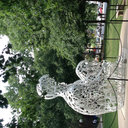Deutsch
Albanian
Arabic
Armenian
Azerbaijani
Belarusian
Bengali
Bosnian
Catalan
Czech
Danish
Deutsch
Dutch
English
Estonian
Finnish
Français
Greek
Haitian Creole
Hebrew
Hindi
Hungarian
Icelandic
Indonesian
Irish
Italian
Japanese
Korean
Latvian
Lithuanian
Macedonian
Mongolian
Norwegian
Persian
Polish
Portuguese
Romanian
Russian
Serbian
Slovak
Slovenian
Spanish
Swahili
Swedish
Turkish
Ukrainian
Vietnamese
Български
中文(简体)
中文(繁體)
Journal of Ethnopharmacology 2019-Oct
Nur registrierte Benutzer können Artikel übersetzen
Einloggen Anmelden
Der Link wird in der Zwischenablage gespeichert
MATERIALS AND METHODS
UPLC-PDA-ESI-MS method was established for the analysis of the components in EAFVC, which was further separated using multiple chromatographic techniques. The MS, 1H and 13C NMR were applied to elucidate their structures. UPLC-PDA method was applied for the simultaneous quantification of major compounds of EAFVC. Furthermore, the protective effect of the EAFVC was determined using APAP-induced acute hepatotoxicity in mice and BRL-3A cells model, respectively. In addition, the hepatoprotective activity of two main compounds in EAFVC on relieving APAP-induced liver injury was further evaluated. Finally, we have some concerns about the protective mechanism of EAFVC via enzyme-linked immunosorbent assay (ELISA), reactive oxygen species (ROS) detection, quantitative real-time PCR (qPCR), western blot analysis and molecular docking.Die vollständigste Datenbank für Heilkräuter, die von der Wissenschaft unterstützt wird
- Arbeitet in 55 Sprachen
- Von der Wissenschaft unterstützte Kräuterkuren
- Kräutererkennung durch Bild
- Interaktive GPS-Karte - Kräuter vor Ort markieren (in Kürze)
- Lesen Sie wissenschaftliche Veröffentlichungen zu Ihrer Suche
- Suchen Sie nach Heilkräutern nach ihrer Wirkung
- Organisieren Sie Ihre Interessen und bleiben Sie über Neuigkeiten, klinische Studien und Patente auf dem Laufenden
Geben Sie ein Symptom oder eine Krankheit ein und lesen Sie über Kräuter, die helfen könnten, geben Sie ein Kraut ein und sehen Sie Krankheiten und Symptome, gegen die es angewendet wird.
* Alle Informationen basieren auf veröffentlichten wissenschaftlichen Forschungsergebnissen



